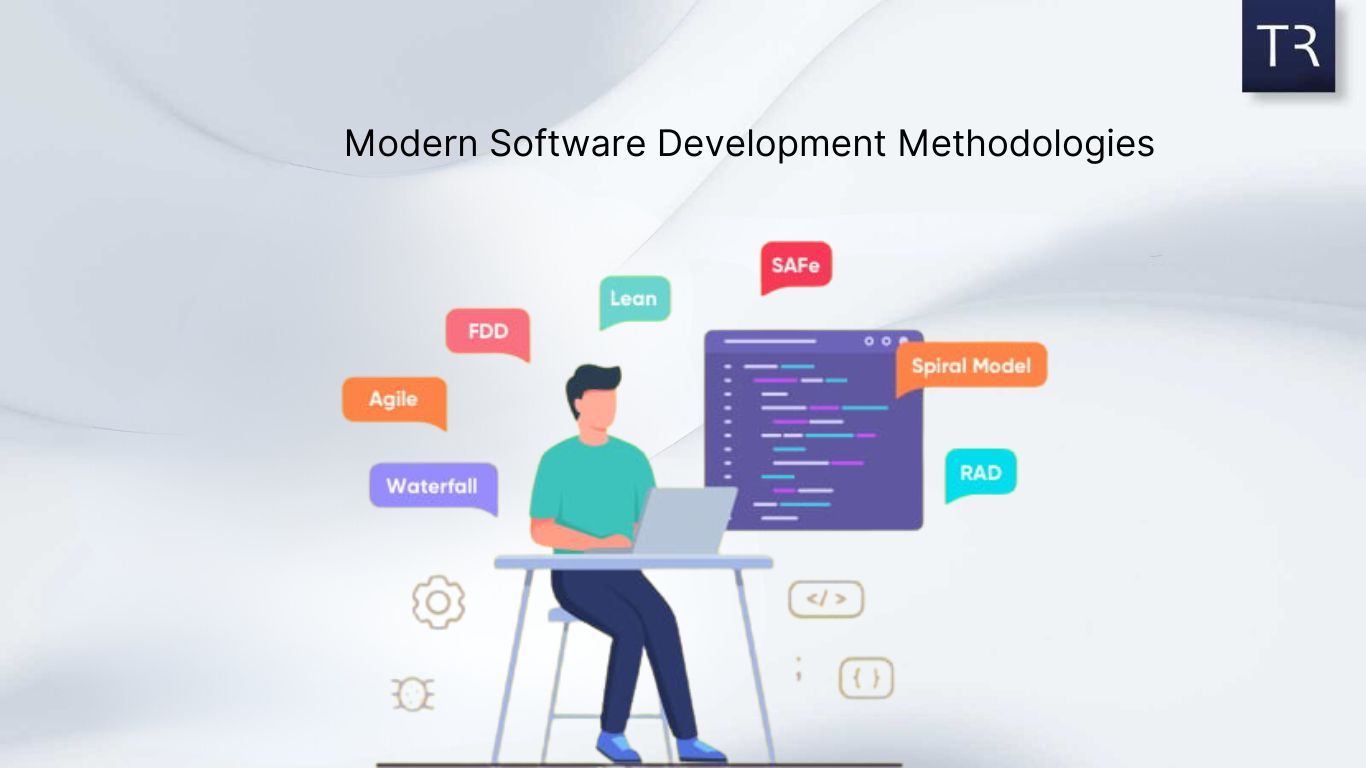Physical address:
573 Hutchinson Ln, Lewisville, TX 75077, USA.
Modern software development methodologies have revolutionized the way teams create, test, and deploy applications. By fostering collaboration, adaptability, and efficiency, these methodologies empower organizations to meet ever-changing market demands while delivering top-notch software solutions.
What Are Software Development Methodologies?
Software development methodologies refer to structured approaches guiding the development lifecycle. From planning to deployment, these methods aim to enhance productivity, reduce risks, and improve product quality.
Table of contents
Key Benefits of Using Modern Methodologies
Modern software development methodologies offer significant advantages, ensuring that teams deliver high-quality products efficiently and effectively. Here are some key benefits:
Enhanced Efficiency
By breaking tasks into smaller, manageable chunks and promoting iterative processes, these methodologies ensure faster development cycles. Agile, for instance, emphasizes regular deliverables, which speeds up time-to-market.
Scalability
Modern methods like Scrum and Kanban provide the flexibility needed to scale up or down based on project requirements. Teams can adapt to growing demands without sacrificing quality.
Improved Collaboration
Collaboration is at the heart of modern methodologies. Techniques like daily stand-ups in Scrum or shared boards in Kanban enhance communication among team members, ensuring everyone is aligned on objectives.
Risk Reduction
By integrating continuous testing and frequent feedback loops, these methodologies minimize risks. Potential issues are identified and addressed early in the development lifecycle, reducing the likelihood of project failures.
Modern Software Development Methodologies
Agile Methodology
Agile is one of the most widely adopted software development methodologies. It is characterized by its iterative and incremental approach.
History
Agile was born out of the frustrations with rigid, sequential development models. The Agile Manifesto, created in 2001, laid the foundation for this flexible approach.
Core Principles
- Customer Collaboration Over Contract Negotiation: Agile prioritizes client input at every stage.
- Responding to Change: Teams adapt to feedback and evolving requirements rather than rigid plans.
- Delivering Incremental Value: Frequent deliverables ensure constant progress.
Advantages
- Faster delivery of usable software.
- Enhanced customer satisfaction.
- Improved team morale through self-organizing teams.
Limitations
- Can be challenging for teams unfamiliar with iterative workflows.
- Requires constant communication, which can be resource-intensive.
Scrum Framework
Scrum is a subset of Agile, designed to help teams organize their work effectively.
Roles in Scrum
- Product Owner: Defines and prioritizes the project backlog.
- Scrum Master: Facilitates the Scrum process and removes obstacles.
- Development Team: Executes tasks and delivers increments.
The Sprint Process
A sprint, typically lasting 2-4 weeks, involves:
- Sprint Planning: Setting goals for the sprint.
- Daily Stand-Ups: Quick meetings to review progress.
- Sprint Review: Demonstrating completed work.
- Retrospective: Reflecting on what worked and areas for improvement.
Key Tools and Metrics
- Burndown Charts: Track remaining work.
- Scrum Boards: Visualize tasks.
- Velocity Metrics: Measure team productivity.
Kanban Approach
Kanban, rooted in lean manufacturing, focuses on visualizing workflow and optimizing processes.
Visualization
Teams use boards to track tasks. Columns represent stages like “To Do,” “In Progress,” and “Done,” providing transparency.
Continuous Delivery
Unlike Scrum, Kanban doesn’t work in sprints. Teams continuously deliver small, incremental updates, ensuring rapid deployment.
Metrics and Analysis
- Lead Time: Time taken to complete a task.
- Cycle Time: Time spent actively working on a task.
- Work-In-Progress (WIP) Limits: Caps on the number of tasks in each stage to avoid bottlenecks.
Related links you may find interesting
DevOps Practices
DevOps bridges the gap between development and operations, emphasizing collaboration, automation, and integration.
Continuous Integration/Continuous Delivery (CI/CD)
Automated tools help integrate code changes frequently and deploy them seamlessly.
Integration of Teams
DevOps promotes shared responsibility, fostering a culture where developers and operations work hand-in-hand.
Benefits of Automation
- Faster deployments.
- Reduced human error.
- Enhanced reliability of software releases.
Waterfall Mode
The Waterfall model is a linear approach that progresses through predefined stages.
Sequential Stages
- Requirements Gathering
- Design
- Implementation
- Testing
- Deployment
- Maintenance
When to Use
Waterfall works well for projects with fixed, clear requirements and minimal changes.
Drawbacks
- Lack of flexibility to accommodate changes.
- Testing occurs late, increasing the risk of defects.
Lean Development
Lean development focuses on delivering maximum value by eliminating waste.
Principles of Lean
- Value Stream Mapping: Identifying steps that add value.
- Empowered Teams: Encouraging autonomy and accountability.
- Continuous Improvement: Regularly refining processes.
Minimizing Waste
Eliminating unnecessary features, overproduction, and delays ensures streamlined workflows.
Delivering Value
Lean prioritizes customer satisfaction by emphasizing usable deliverables at every stage.
Extreme Programming (XP)
XP is an Agile methodology designed to enhance software quality through strict engineering practices.
Core Practices
- Frequent releases.
- Close collaboration with customers.
- Emphasis on technical excellence.
Pair Programming
Two developers work together, enhancing code quality and knowledge sharing.
Test-Driven Development
Tests are written before code, ensuring that each feature meets requirements.
Conclusion
Modern software development methodologies are essential for staying competitive in today’s fast-paced industry. By understanding and implementing the right methodology, teams can deliver high-quality software efficiently while fostering innovation and collaboration.
FAQs
What is the best methodology for small teams?
Agile and Scrum are ideal for small teams due to their emphasis on collaboration and flexibility.
Can we combine methodologies?
Yes, hybrid models like combining Agile and Waterfall are becoming popular for addressing diverse project needs.
How does DevOps differ from Agile?
DevOps focuses on integrating development and operations, while Agile emphasizes iterative development.
What tools support Kanban?
Tools like Trello, Jira, and Monday.com are widely used for implementing Kanban.
Are there industries where Waterfall is still relevant?
Yes, Waterfall is suitable for regulated industries like healthcare and construction.
How can resistance to change be managed?
Educating teams, providing training, and showcasing benefits can help overcome resistance.


